Our BotW this week comes from Germany, concentrating on an elegant, minimalist look.
Builder Xavel Tremel writes:
We are a small atelier in Northern Bavaria, Germany, and we build handmade basses of best quality: www.franz-bassguitars.de
More about the Wega 5 Flamed Maple:
Franz Bassguitars Wega 5 Flamed Maple Amber bass guitar, 5-Saiter, alder body, flamed maple top, 5-piece thermo maple thomann neck (neck-glued-on-construction), 876 mm scale (34 1/2″), birdseye maple fretboard, 24 frets, matching headstock, 2x Delano JSBC pickups, Noll TCM2 active/passiv 2-band elektronics, Gotoh mechanics, ETS 3D bridge, 19 mm string spacing, black hardware.
Colour: amber satin, incl. case, weight: 4,04kg, Made in Thomann Germany
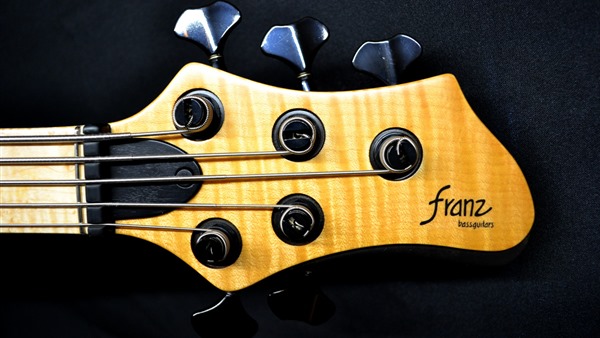

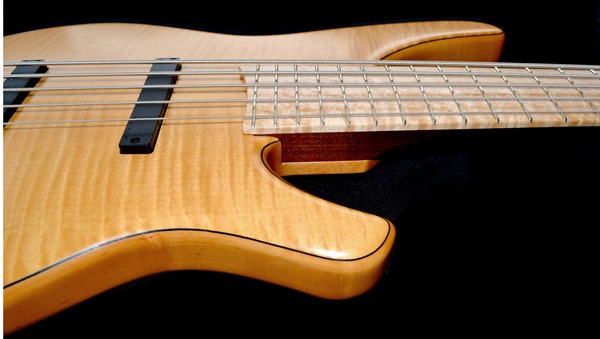

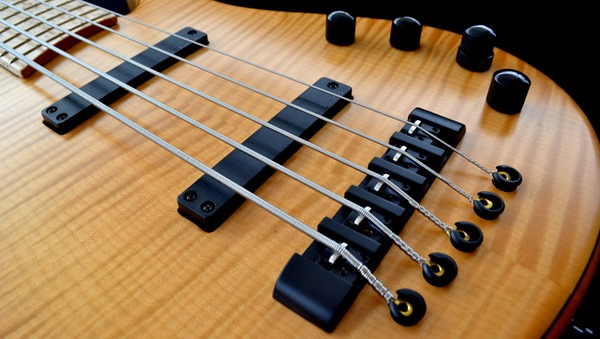

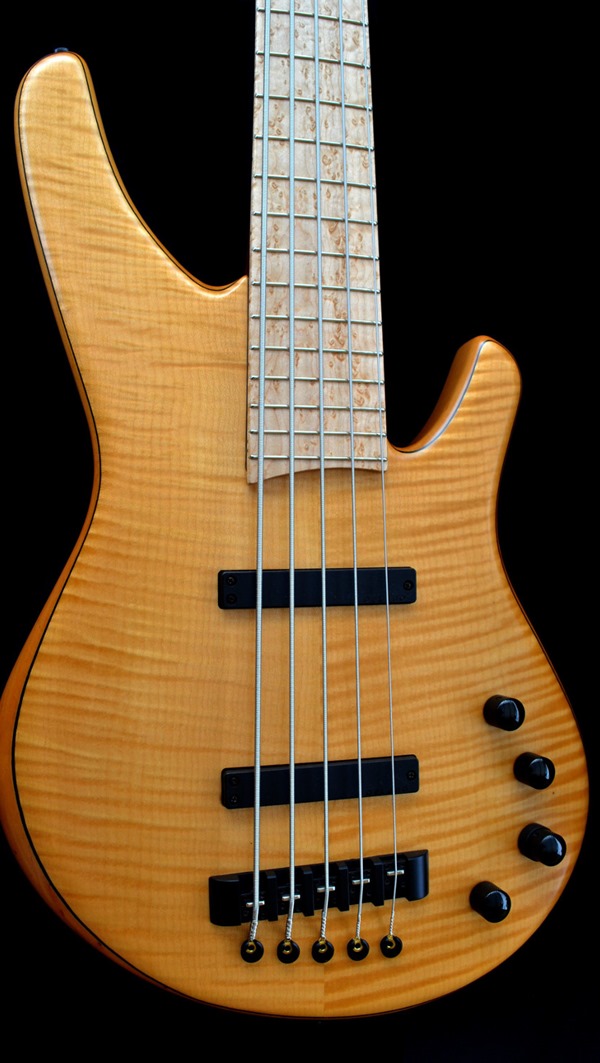

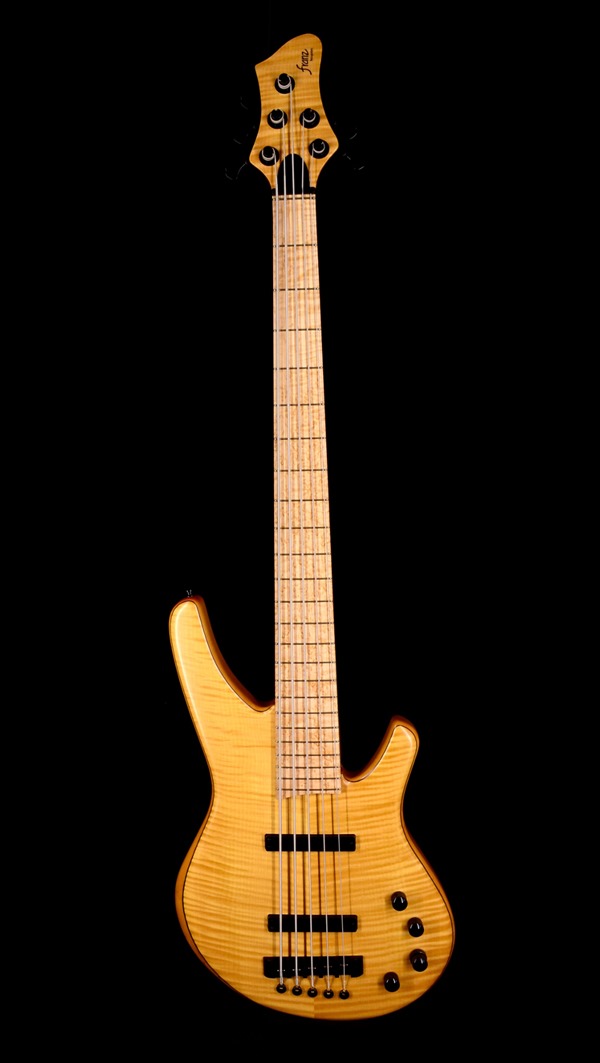

This is most certainly a thoughtful, well-crafted design that any player would love to own. Well done, Xavel!
Want to have your bass featured for Bass of the Week?
Submit yours right now using our easy web form

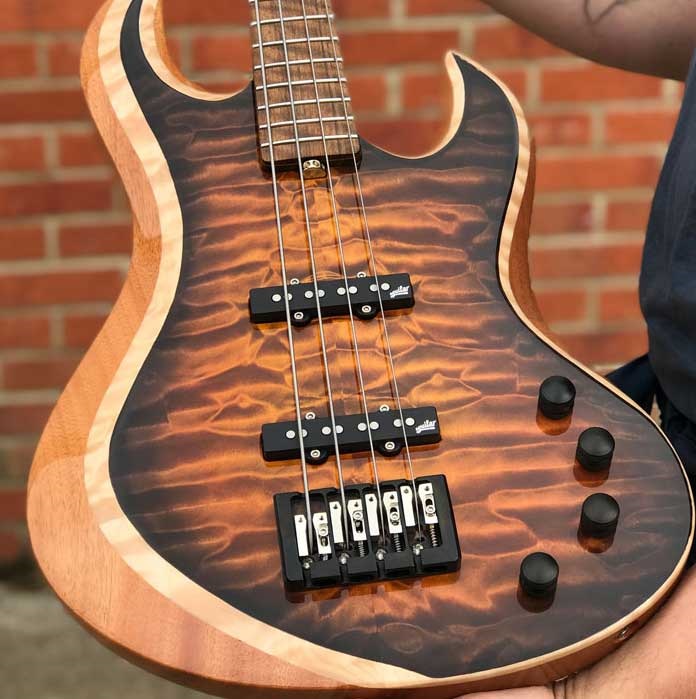

What a great looking bass. Bravo!
Absolutely lovely instrument! What is the black material sandwiched between the flame top and the alder body? Or is that just black pin striping?
Very nice, cool shape, good colors, nice hardware.
Nice Looking Bass!!! Looks very comfortable.
A beautiful bass. But pardon my being a grinch, there are two design flaws, which unfortunately plague most 5-string basses. 1) The tuners should be 2+3 instead of 3+2 to get the B string tuner farther from the neck in order to prevent too much of a break angle over the bridge or run out of leader and bind the string around the tuner post, risking binding and breakage. 2) Likewise, there needs to be more backlength to the B string for the same reason: to prevent too steep a break angle over the bridge, keep the bridge saddle from interfering with the double-wrap at the ball end of the B string, and again, so there is less risk of binding and breakage. At the very least, it should be like Lakland, with parallel string anchors. Otherwise, a great bass finished impeccably.
Not neccessarilly true. I think arranging the tuners this way will distribute the tension more evenly across the neck, because the thinner strings produce higer tension (to produce higher notes).
Also, if you look at it carefully, it is not really 3+2. It is more like 3+1+2.
your comment about 3+1+2 makes no sense unless you are trying to say the middle string has a straight line to tuner – but that is not what the previous post was commenting on – he was talking about the angle from the nut down towards the headstock because the B tuner is not far enough back from the nut. Same problem at the bridge – the ball end of the string is too close to the bridge saddle. The string anchors should be set in at an angle like the bridge so all strings have enough distance from ball end to saddle.
Sorry, I mean 2+1+2.
Unwound or tapered B string solves the second issue you have and provides better clarity for the Low fundamentals of the B string anyways. Just my two cents. Also, I do understand your sentiment about the 3+2 tuning peg placement, but seems like it wouldn’t yield much difference on this particular bass anyways.
Beautiful…but too many strings for me
OMG…I love it…can I buy it…I really love to hear a German bass
love zero fret on German basses
1) the angle of the B string over the bridge and the nut are a bit of a concern. Especially at the bridge. The B is a such a solid, thick string, that I would be concerned that the angle would actually create something close to a kink – impacting the resulting sound.
Also a note to the fellow about string tension. Although it seems intuitive that a higher string would require higher tension, but actually the reverse is true. The lower, string requires more tension because it is thicker: T (Tension) = (UW x (2 x L x F)2) / 386.4, Unit Weight, the Scale Length of the instrument, and the Frequency of the string
How can I HEAR this bass?!?
That bass is crazy , love the 19mm spacing on 5s .